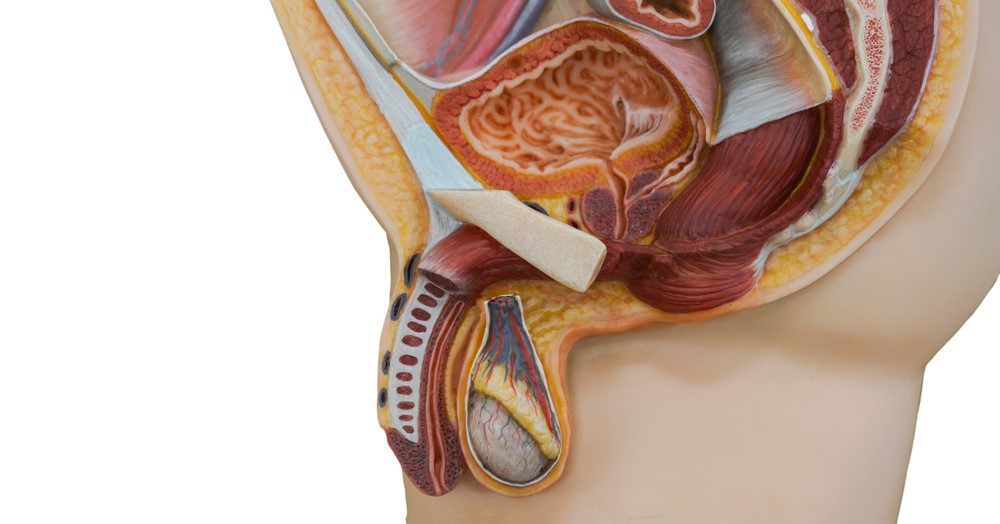
What is being tested?
Testosterone is a steroid hormone (androgen) made by the testes in males. Its production is stimulated and controlled by luteinising hormone (LH), which is manufactured in the pituitary gland. In males, testosterone stimulates development of secondary sex characteristics, including enlargement of the penis, growth of body hair and muscle, and a deepening voice. It is present in large amounts in males during puberty and in adult males to regulate the sex drive and maintain muscle mass. Testosterone is also produced by the adrenal glands in both males and females and, in small amounts, by the ovaries in females. The body can convert testosterone to oestradiol, the main sex hormone in females.
How is it used?
Testosterone testing is used to diagnose several conditions in men, women and boys. These conditions include:
When is it requested?
In boys, the test is performed with the FSH and LH tests, if puberty is delayed or slow in developing. Although puberty begins at different times in different individuals, generally by the age of 10 years, there are hormonal and physical manifestations of the onset of puberty. A delay can occur if the testes do not produce enough testosterone or if the pituitary does not produce enough LH.
The test may be performed if a young boy seems to be undergoing a very early (precocious) puberty with obvious secondary sex characteristics, such as an enlarged penis, development of muscle mass and growth of body hair and may include measuring other androgens.
In men, the test may be performed when infertility is suspected or if the patient has a decreased sex drive or erectile dysfunction, which can result from low testosterone levels. Testing may include sperm analysis (semen analysis) in cases of infertility, or a blood test for total testosterone for erectile dysfunction or decreased sex drive. Free testosterone may be measured in conjunction with SHBG (Sex Hormone Binding Globulin) especially in situations such as obesity, thyroid disease, ageing, liver disease, certain drug treatment, HIV and nephrotic syndrome.
In women, testosterone may be measured if a patient has irregular or no menstrual periods, is having difficulty getting pregnant, or appears to have masculine features, such as facial and body hair, male pattern baldness and a low voice. Testosterone levels can rise because of tumours that develop in either the ovary or adrenal gland or because of other conditions, such as polycystic ovarian syndrome (PCOS). Measurements of other pituitary and adrenal hormones may also be performed.
Blood for testosterone should be collected in the morning at about 08:00 hours and in the fasting state. Repeat measurements should be made if results are low or borderline before making a diagnosis.
What does the result mean?
There is great variability in testosterone levels between men and it is normal for testosterone levels to decline as men get older. Hypogonadism in a male refers to a reduction in sperm and/or testosterone production.
Primary hypogonadism, such as damage to the testes with reduced testosterone as a result, can indicate impaired testosterone production because of alcoholism, physical injury or viral diseases like mumps. Sperm production is also impaired. Genetic diseases also can cause decreased testosterone production in young men (Klinefelter’s, Kallman’s, and Prader-Willi syndromes) or testicular failure and infertility.
In secondary hypogonadism however, a decreased testosterone level may indicate hypothalamic or pituitary disease with reduced secretion of LH and FSH. Evaluation of possible causes should also include measurement of prolactin, thyroid hormones and cortisol.
Increased testosterone levels in males can indicate testicular tumours. Increased testosterone in boys is usually the cause of early puberty.
In women, increased testosterone levels can indicate polycystic ovary syndrome (PCOS) or an ovarian or adrenal gland tumour. Many analytical methods for testosterone in females lack sensitivity, with LCMS methods preferred for this assay.
Is there anything else I should know?
Alcoholism and liver disease in males can decrease testosterone levels. Drugs, including steroids, can also decrease testosterone levels. Prostate cancer responds to androgens, so many men with advanced prostate cancer receive drugs that lower testosterone levels.
Common questions
Maybe. Testosterone supplements, either with patches or injections, can raise testosterone levels. However although men with erectile dysfunction may have low testosterone, testosterone administration does not improve the symptoms in all cases. Your doctor will determine if this is the right therapy for you.
Women’s bodies also produce testosterone but in small amounts. It is needed for hormonal balance and to help women’s bodies to function normally. If your body is producing too much testosterone, however, you may have more body hair than average, have abnormal or no menstrual periods, or be infertile. A testosterone test can help your doctor to understand what is causing your symptoms.
Studies have shown a proportional relationship of testosterone levels to the amount of body hair. However, the hair growth response to testosterone differs in different parts of the body. Hence, in some men, for example, testosterone promotes hair growth in the abdomen and back while hair growth is suppressed in the scalp, leading to male pattern baldness.
More information
Pathology Tests Explained (PTEx) is a not-for profit group managed by a consortium of Australasian medical and scientific organisations.
With up-to-date, evidence-based information about pathology tests it is a leading trusted source for consumers.
Information is prepared and reviewed by practising pathologists and scientists and is entirely free of any commercial influence.